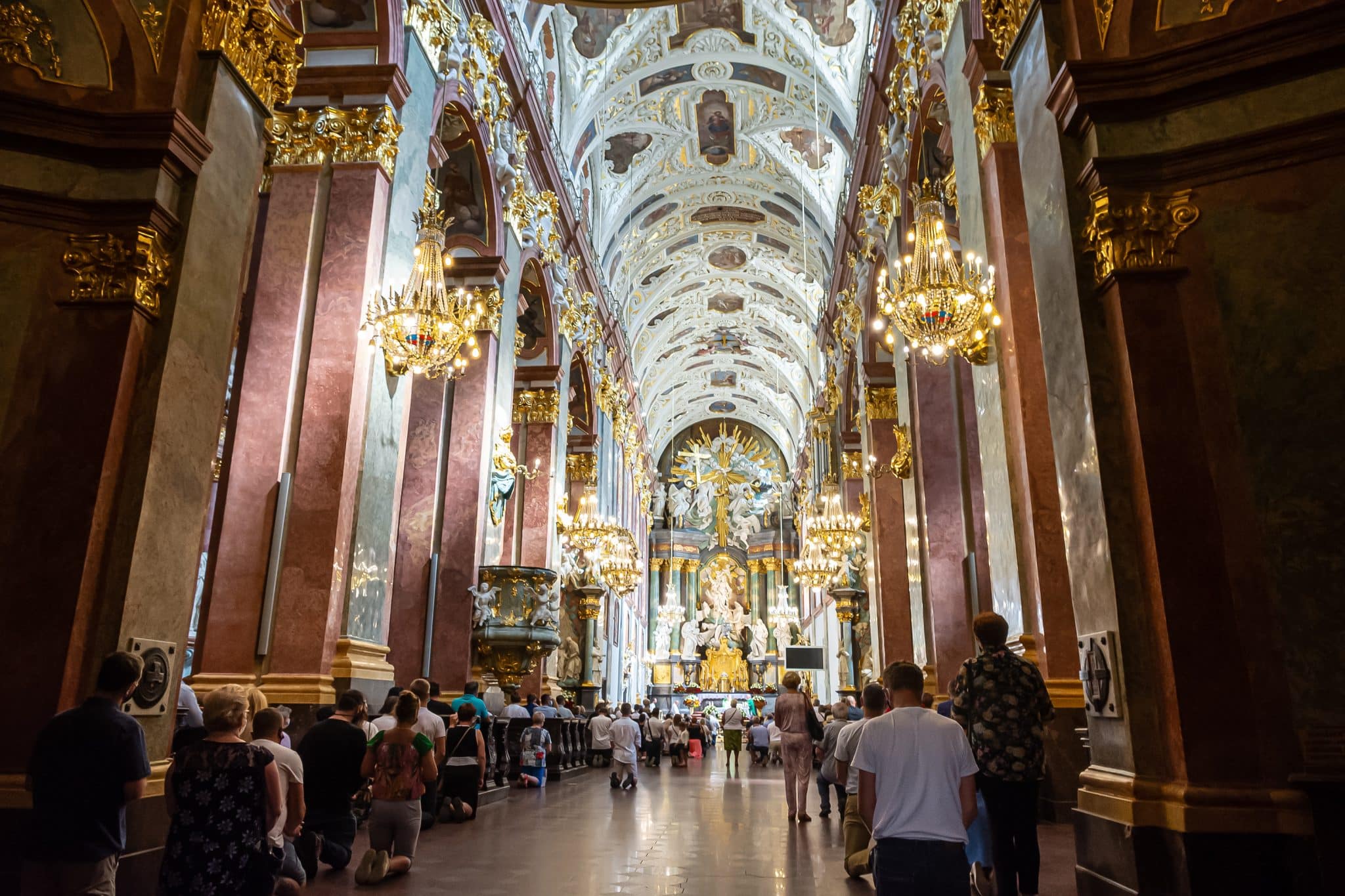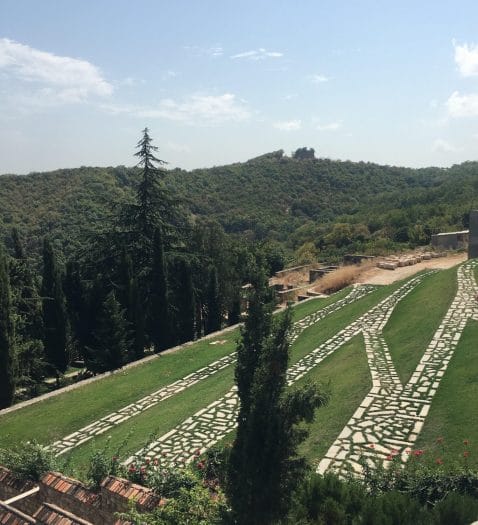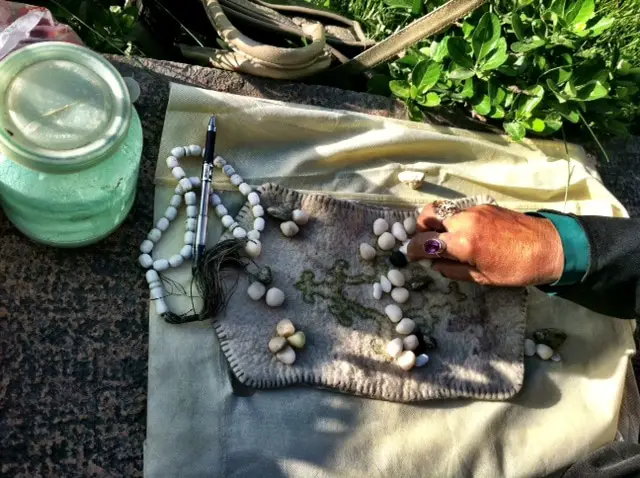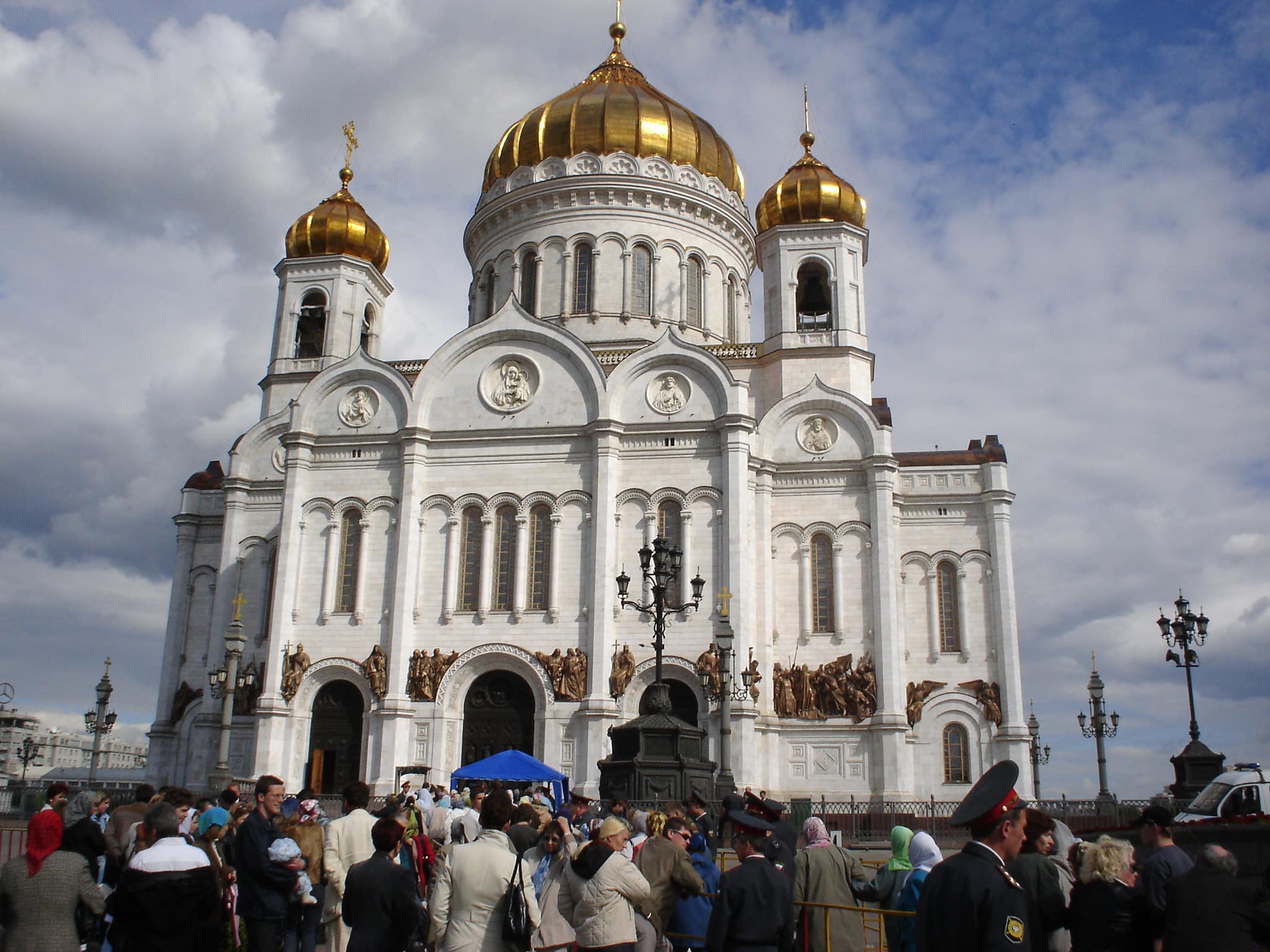The Cathedral of Christ the Savior is located in the heart of Moscow, neighboring the Kremlin along the Moscow River. The Cathedral has been built twice, once by the tsars to remember the fallen dead of the War of 1812, and again by the Russian people after it was demolished by the Soviets. In its second construction, it maintains its status as a memorial, but also represents a celebration of the renewed ability to freely practice religion in Russia and claim Orthodoxy as an open part of one’s identity.
Christ the Savior: Early History and First Construction
Following the defeat of Napoleon’s Army in the Patriotic War of 1812, Tsar Alexander I announced that a cathedral named after Christ would be erected in central Moscow. In his 1812 Supreme Manifesto, he said of its construction: “May the Most High bless Our undertaking! May it be done! May this Temple stand for many centuries, and may the censer of gratitude of later generations, together with love and initiation of the deeds of their ancestors, be lit in it before the Holy See of God.”
In 1817, initial plans for a heavily neoclassical Christ the Savior Cathedral were drawn by architect Karl Vitberg. In 1822, construction started at Sparrow Hills, then a vacant area with excellent views over Moscow from across the Moscow River. However, by 1825, although the foundation had quite literally been laid, the project ground to a halt and Vitberg faced accusations of embezzlement. Further, the site had proved unstable and unusable due to the river’s water table. A total of 16 million rubles, then an astronomical sum, had been spent. An eight-year trial ensued and eventually saw the architect exiled.
It was not until 1832, under Tsar Nicholas I, that plans for the monumental cathedral were revived. In that year, Konstantin Ton of St. Petersburg drew new designs, envisioning a cathedral reminiscent of the former Byzantine Empire. They were approved by the state to be funded primarily by the Russian Treasury. They envisioned tons of granite and marble to be brought from northern Russia into the heart of Moscow. To accommodate this, an imperial order commanding the construction of the Catherine Canal, which now connects the Moscow River to the Volga via three additional rivers that were used as connection points. The canal went on to have economic effects far beyond its initial use, connecting the provinces.
The new plan also moved the cathedral to its current, more central and stable location near the Kremlin. This area, however, is one of the oldest populated areas of Moscow. Construction, therefore, had to wait as multiple buildings were purchased from their owners, vacated, and torn down. Among these buildings was Alekseevsky Monastery – and tearing down its historic buildings, most built in the 1600s, was the source of some controversy at the time. However, the monastery was given new grounds at Krasnoye Selo, now in northern Moscow, and construction continued.
By 1860, the primary structure of Christ the Savior Cathedral was complete, though the interior décor and landscaping of the grounds remained unfinished for an additional two decades. In 1880, the name Christ the Savior Cathedral was approved. Following a total of four and half decades of construction, the cathedral was completed and consecrated on 26 May 1883. It opened for worship services the same year with a capacity of 10,000 people. Then the largest church in Russia, it stood some 30 stories high and was topped with massive domes, collectively gilded with roughly 36 pounds of gold, donated by Moscow merchants. The names of the soldiers who had fallen during the Napoleonic War are, to this day, engraved on the cathedral’s interior walls just off the main worship area. The Russian Treasury paid a total of 15 million rubles for its construction.
Upon competition, Christ the Savior Cathedral rapidly became the vital center of the Russian Orthodox faith and a center of Russian culture. The cathedral’s choir was considered to be among Russia’s best, its large building housed a library and frequently hosted events, including remembrance celebrations for the Patriotic War of 1812.
Christ the Savior Cathedral under the USSR
On November 7, 1917, not long after two communist revolutions had rocked Russia, a council of laity and clergy gathered at Christ the Savior Cathedral for one of Russian Orthodoxy’s most important ceremonies – the election of a new Patriarch. In the end, Archbishop Tikhon was elected and later enthroned in the nearby Assumption Cathedral inside the Kremlin.
Soon thereafter, at the beginning of 1918, the Bolsheviks ended state support for churches. Christ the Savior, and other Russian churches, were able to maintain operations only due to contributions from parishioners. However, funding issues as well as active interference from the new Bolshevik authorities meant that there were soon rifts and divisions within the Orthodox Church.
In 1922, a group of priests that encouraged cooperation with the Soviets rose to power, calling themselves the Supreme Church Authority. Initially, the congregation of Christ the Savior resisted them and would not allow their representatives to be consecrated in the cathedral. The Supreme Church Authority asked the Soviet government to investigate the cathedral for anti-revolutionary activity. That same year, they won control of the building.
1922 also saw the first suggestion, by the government, that the cathedral should be torn down and replaced with a grand Palace of the Soviets to house the Supreme Soviet of the USSR and other communist organizations.
By the 1930s, under the leadership of Joseph Stalin, soviet oppression of religion no longer differentiated between those religious authorities that supported the state and those that did not. In 1931, Christ the Savior Cathedral was ordered demolished. Its gold was confiscated by the state treasury and much of its stone made its way into other structures, including several metro stations then under construction.
The Palace of Soviets, however, was never built. Intended to stand at 400 meters with an auditorium capacity of 21,000, it was to serve as a testament to Soviet architectural prowess in addition to being one of the largest buildings in Europe. Although the foundations and some girdering were begun by the time that World War II broke out in 1939, the post-war need to rebuild much of Russia sapped the funding needed for such grand projects.
Discussions were reopened about what to do with the former site of Christ the Savior Cathedral under Nikita Khrushchev. It was eventually determined to turn the concrete-lined hole into a year-round heated swimming pool.
Under the direction of architect Dmitry Chechulin, the Moskva Swimming Pool was opened in 1958. Spanning approximately 129 meters across, it was the world’s largest and equipped with a sanitation system that was supposedly so good at filtering contaminants that it could have been used as a mass sanitation site in the event of nuclear attack.
With glasnost, the Soviet system began to fall apart, including its repressions of religion. In 1988, a group of citizens formed to agitate for the reconstruction of Christ the Savior Cathedral. In 1989, they gained the support of the Orthodox Church and thousands of Soviet citizens. The Soviet government issued permission for the reconstruction in 1990. However, with the Soviet government, economy, and society crumbling, construction was not organized until after the USSR had finally collapsed.
The New Christ the Savior Cathedral
In 1992, a fund was opened to sponsor the construction of a new Christ the Savior Cathedral. More than a million Soviet citizens, businesses, and organizations contributed to the monumental project. Many of their names can now be found inscribed on the cathedral’s interior walls near its back entrance.
In 1995, the reconstruction began, using the same plans as the first completed construction as its starting point. The chief architects of the new project were M.M. Posokin and A.M. Denisov. Although the plans were carefully followed in most respects, some changes were made. One of the best known are the reliefs on the exterior walls. The original sculptures had been saved by the Orthodox Church and preserved at Donskoy Monastery in Moscow. The decision was made to leave those original reliefs at the monastery and replace them on the cathedral with new ones created by Zurab Tsaretilli, the controversial former head of the Russian Academy of Arts.
Tsaretilli was heavily politically connected and complaints arose that this was another example of the artist attempting to leave a mark in a high-profile, public space. While most of the sculptures were similar if not nearly identical, the material was changed from white marble to bronze. This was part of a general shift between the original building and the modern copy from a warmer color palette to a significantly frostier and more accented design.
Further modernizations included trading the gold-gilded roof for a less expensive titanium-nitrate coating. Additionally, many new murals were added to the interior walls of the Church, which were hotly contested due to their absence in the original plans. Another major physical change to the modern construction was the inclusion of a car park under the building, enough to house a few hundred cars at any given time and today used mostly for dignitaries attending major events.
As the construction proceeded through the tumultuous latter half of Moscow’s 1990s, other accusations of corruption, including profiteering by officials in the Church itself, also arose although no prosecutions were ever held.
The Cathedral of Christ the Savior was consecrated and officially reopened on August 19, 2000. The cathedral took just five years to build, shaving a few decades off the original structure’s timeline through the power of modernization.
The rapid construction of the cathedral was considered almost miraculous – and a testimony to what grassroots efforts in the newly minted Russian democracy could accomplish. The scale, monetary requirements, and relatively short construction period were all beyond what the Soviet Union could have achieved in the last years of existence. By the time the new cathedral was finished, 360 million dollars had been poured into the project.
Today, the new Cathedral of Christ the Savior receives around one million visitors annually. It is also officially a “patriarchal courtyard” for Russian Orthodoxy, meaning that it often hosts major events led by Patriarch Kirill, the current head of the Orthodox Church. It was in Christ the Savior where he was elevated to his position in 2009 and in Christ the Savior that he regularly conducts services for important religious holidays such as Christmas and Easter. Other recent history-making events held at the cathedral include the arrival of relics of Saint Nicholas, the patron saint of Russia, which were temporarily hosted in the cathedral from Italy and visited by thousands of Orthodox pilgrims in 2017. The cathedral also hosted a meeting in 2009 between the Russian Patriarch and the Patriarch of the Russian Orthodox Church Abroad, a theological split that occurred after the revolution and remains today.
The cathedral, as it has since the time of the tsars, has also been closely tied with politics. Christ the Savior Cathedral is where the Tsar Nicholas II and his family were formally canonized as saints. It is also where Boris Yeltsin, the first president of Russia, laid in state before his burial. Christ the Savior Cathedral has been criticized for these political connections as well as for renting some of its space for private events. However, it should be stated that none of these things, from renting space to servicing political clientele to even having political connections are unique to the Russian Orthodox Church or Christ the Savior Cathedral.
For anyone visiting Moscow, the cathedral is centrally located and one of the dominant elements of the skyline. A quick visit to see it can be easily joined to your time on Red Square or touring the Kremlin Grounds. Given its history and current importance to what is by far Russia’s largest confession and a major component of its historical and modern culture, a trip to see the cathedral is essential. Entrance is free and all are welcome, although women are asked to cover their shoulders and hair and men are asked to remove their hats.
You’ll Also Love

Attending Catholic Mass in Poland as an American
Catholic Mass in Poland is not only a religious ritual but also a reflection of the nation’s history, culture, and identity, shaped by centuries in which Catholicism anchored Polish society through partitions, war, and communism. Today, around one-third of Poles attend Mass weekly and 71% identify as Catholic, making Poland one of Europe’s most religious […]

Ramadan and Eid in Bishkek, Kyrgyzstan
Ramadan is the Muslim holy month when followers are expected to fast, not drinking or eating from sunrise to sunset. During this month, daily life is molded around the fast. Ramadan ends with Eid al-Fitr, a feast and celebration. Kyrgyzstan is a majority Muslim nation and Ramadan and Eid al-Fitr are major parts of the […]

The Monastery of Saint Nino at Bodbe in Georgia
During my first week in Georgia, my classmates and I took a trip out to Sighnaghi, which is roughly a two-hour drive from Tbilisi, the Georgian capital. In Sighnaghi, we visited the Monastery of Saint Nino at Bodbe, which was built in the 9th century and renovated extensively in the 17th century. Saint Nino, who […]

Saint Michael’s Vydubychi Monastery in Kyiv, Ukraine
On most weekends, I’m guilty of sleeping in late and lounging around my host family’s apartment until the afternoon. My host mom, who serves me mouthwatering meals every day, typically lets me sleep in until 11am before she calls me into the kitchen for breakfast. However, there was one Saturday morning in particular when she […]

Fortune Telling in Bishkek
Recently, a colleague and I went to a yasnovidyashi, a Kyrgyz fortuneteller (the name actually translates to “Clear Seer”), for the first time. Why? We’ve never done it before, we were looking for a new experience, and we were curious to know more about these infamous women of Bishkek with the “dangerous” reputation of hypnotizing […]





